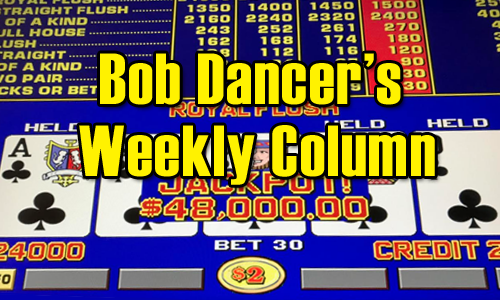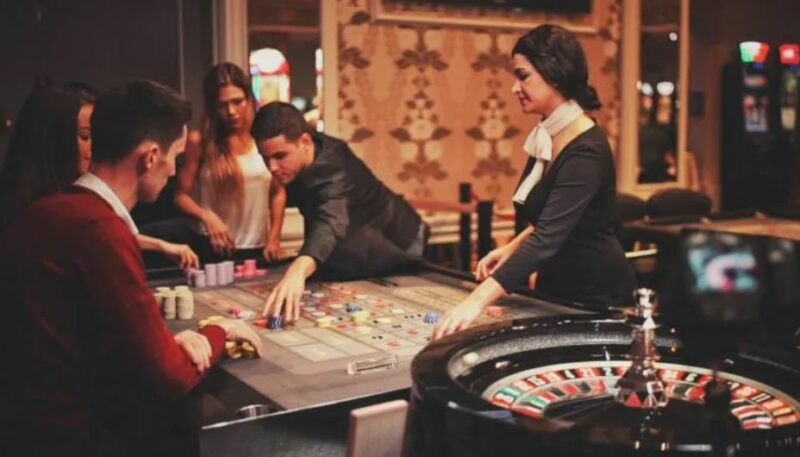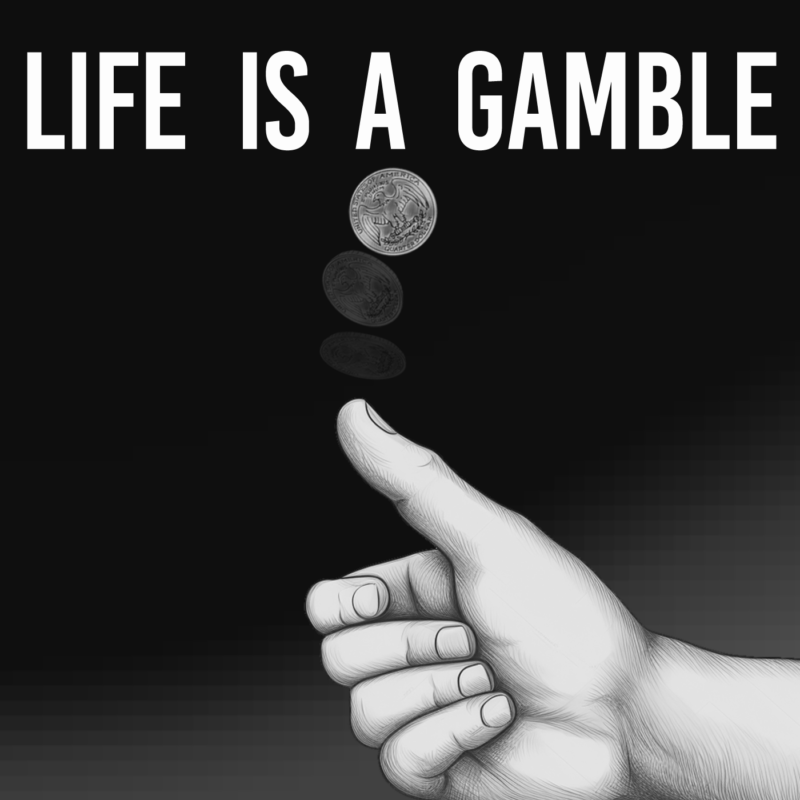
One of the hallmarks of the Dancer/Daily strategies, especially the advanced ones, is that they presume the player can follow simple logic.
An example of what I’m talking about can be found in last week’s blog, when we discussed the strategy for holding a solitary A with a JT in the same hand in the game 9-5 Triple Bonus Poker Plus. When we discussed a straight penalty (sp) to the JT, we limited the discussion to a 7, 8, or 9 and didn’t include either a K or Q.
In many contexts, both a K and a Q are indeed sps to JT, but in this particular case, if one of these cards were in the hand, it would create an AKJT or AQJT 4-card inside straight. These two combinations (listed as ST4 3h1i) are higher ranking than either holding the solitary A or JT, so if the inside straight combination were present, we would never get to the A versus JT decision.
Daily and I assumed that understanding this sort of logic was part of the price of using advanced strategies. We included three easier strategies for each game so players could use the one they wanted. The advanced strategies yield better results, but it takes some work to master them.
Liam W. Daily passed away a decade or so ago, so he is not involved in the current decisions of how to create strategies today. At the same time, I believe he and I together created a good methodology and I stick to it as much as I can. Today I’m discussing an addition to our methodology that I can’t know whether he’d agree with or not.
I want to discuss a strategy in the same game as I did last week, but this time it involves hands that include unsuited AQJ. The default play for the lesser three strategies is to hold QJ on these hands. The advanced strategy outlines the cases where you hold the solitary A.
Like last week, the A can have a flush penalty (fp)) — “or worse” — meaning a straight flush penalty (sfp — specifically a 5) or a straight flush kicker penalty (sfkp —specifically a 2, 3, or 4). These fps will be front and center in the strategy.
Likewise, the A can have straight penalties — either a 5 (a low straight penalty) or a 2, 3, or 4 (a kicker penalty). While the presence of one or more of these usually (not always) precludes the A from being chosen, I do not specifically mention them in the strategy. (You’ll see why not!)
For the unsuited QJ there can be no flush penalties simply because the two cards aren’t suited with each other. The relevant straight penalties are the 9 and 8, but not both in the same five cards. That would give us QJ98 which is explicitly listed (as ST4 2h1i) above both the A by itself and the unsuited QJ.
In the strategy, I break these hands down into three different parts — based on the number of the fps to the A.
- The A has two or more fps or worse. In these hands, we always prefer QJ. (As we shall see later, it’s this category that is the whole reason for this column.)
- The A has exactly one fp or worse. Here we hold the A if the other two cards are 97 or 96. A 9 is a more severe sp to the QJ than an 8 is (because the 9 interferes with KQJT9 and QJT98 straight while the 8 only interferes with the QJT98 straight.) After the 9 has been chosen, the reason it is limited to 97 and 96 is that these are the only ones not including a straight or straight flush penalty to the A.
- The A has no fp. Here we hold the A if the other two cards are an 87 or 86 or 9 anything. The 87 and 86 combinations avoid any straight penalties to the A, and the 9 is a strong enough straight penalty that one straight penalty or kicker penalty isn’t strong enough to change the play.
That’s the strategy in English — which is much too wordy to include in a strategy. Here is how I code it — never previously published and actually a work in progress as I’ve found reason to tweak this a little even in the process of writing this blog.
QJ (NEVER < A with two fp or worse)
(< A with exactly one fp or worse when 9p or 87 or 86)
(< A with no fp, when 97 or 96)
A
Here are some example hands. If you’ve mastered what I’ve said here, it should be easy for you.
- A♥ Q♣ J♦ 8♣ 4♦
- A♥ Q♣ J♦ 9♣ 4♦
- A♠ Q♥ J♣ 9♠ 6♠
- A♣ Q♦ J♠ 8♥ 6♣
- A♦ Q♠ J♥ 8♣ 7♦
- A♠ Q♥ J♣ 9♠ 8♠
Here are the answers:
- QJ
- A
- QJ
- QJ
- QJ
- QJ98
How did you do?
The leading impetus for today’s column is the strategy line of “(NEVER < A with two fp or worse).” So, what’s so unusual about that?
What’s unusual is that QJ > A is the default strategy. Advanced strategies generally only list the exceptions — namely the cases where QJ < A. So why did I include this line telling you to do the default?
Because of the next line — “(< A with exactly one fp or worse when 9p or 87 or 86).” This line includes the new phrase, to me, of “or worse.” Anybody else using this strategy might forget what I mean by fp or worse — namely fp or sfp or sfkp. If you weren’t exactly clear on the definition, you might easily conclude that two fps qualifies as “exactly one fp or worse.” Obviously two fps are worse than one, but I am not using “or worse” in that context.
And not just for you. I have a place where I play this game now, but it could easily go away for one of a variety of reasons. In that case, my strategy will stay in a computer folder until the next time I find that game and decide to play it. My memory isn’t what it used to be, and I might have forgotten what I meant by “fp or worse” way back in the summer of 23.So, I added the redundant line.




